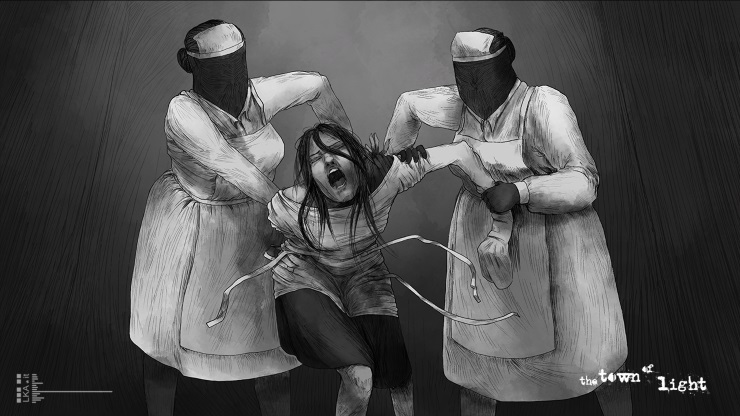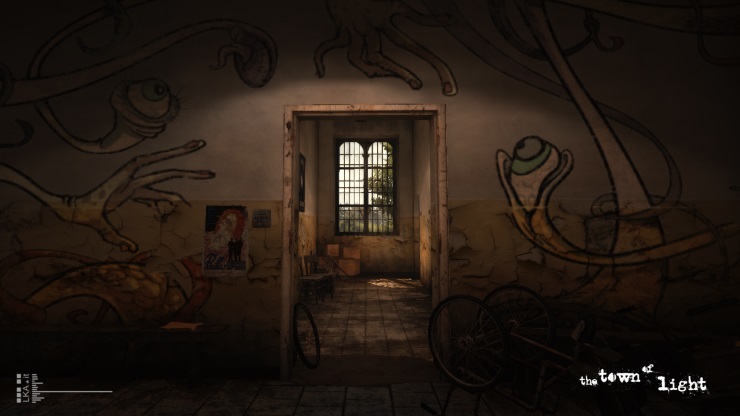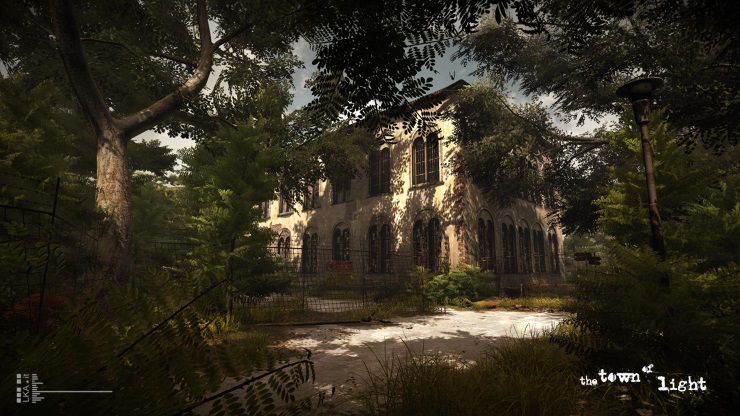February 26, 2015.
The horrors I experienced whilst playing The Town of Light weren’t composed of jump scares, hideous beasts, or blood-drenched floors and walls. I didn’t have to slay enemies with a barrage of bullets or a machete, and the nightmares never got better. Although the story of Renée is one of fiction, the basis of Volterra’s disturbing practices is trapped deeply in endless research and hideous truth.
The Ospedale Psichiatrico di Volterra was a psychiatric hospital built in the heart of Tuscany, Italy in 1887. Its purpose was to help people with mental illness, offering those that struggled with their difficulties a sanctuary of peace, support, and treatment. At first, the asylum allowed its patients to move freely through the wards, live normal lives and do the things that others outside its walls were doing, all while being treated to a high standard of care. Unfortunately, as its population grew rapidly the dwindling staff struggled to cope with the huge influx of patients, and that care began to take a horrid turn for the worst. It was closed by the Italian government in 1978, but all of the cruelty, mistreatment and psychological torment that had occurred within its confines would live on in the minds of those that had suffered.
LKA has created a game that not only opens your eyes to a sensitive subject matter, but it does so in a way that doesn’t try to shock or offend you. There were plenty of moments where my face screwed up and my skin crawled, angry at the events that were unfolding right in front of my eyes, but I never found it unnecessary or out of place. There are some really horrible moments in The Town of Light, but each one has an important place in bringing this story to life.

The game tells the story of Renée, a former patient of the Volterra Asylum in the early 40s as she returns to the now abandoned and decaying building, looking for clues to how and why she faced the horrors she was forced to endure. Through various memories and realisations, you’ll be thrust straight back in time to when she was first admitted at the tender age of 16 and you’ll subsequently witness all the horrendous things that happened to her. The scenes between chapters are where the traumatic life of Renée is fully realised, from the start you see how she was sexually abused and violently treated by those she was supposed to trust, and the art style used is striking and somewhat poignant. Whether LKA decided to use illustrations that look like they were taken from a children’s book was intentional or not, they certainly add to the eerie and disturbing nature of the game.
Every room within the asylum adds subtle detail to the mystery of Volterra, such as the chair in the gynaecology ward, or the electric shock equipment in the treatment room. It is a horribly dank and filthy building, but as memories arise and you snap back into the past, the black and white blur they exist in somehow makes them more powerful. It’s hard to fully explain what I mean without giving anything away, but when you start to uncover the story of Renée’s forbidden love, for example, these memories become all the more emotional.

Mechanically it offers a basic and simplistic control scheme, allowing you to follow the story with relative ease. It shares more in common with Gone Home and Dear Esther, so you only need to move around the asylum and look at various objects. You can use your flashlight to illuminate darker areas, but that’s about it. There is no real difficulty to the game either and if you ever feel stuck at any point, a simple click of a button will bring up a hint as to where you need to go to next. The narrative can sometimes be too ambiguous, leaving you with no clue of where to go so this mechanic can prove very useful at times.
There are different paths, though, and at points you’ll be given dialogue choices. These decisions help to build the character of Renée and provide you with more information as to what happened to her. The second time you’re presented with these choices really highlighted the hard work LKA has put into the game, and when you start to uncover the mind-set of her parents, the game starts to elude more to the bigger picture.
On consoles, The Town of Light looks even better. The lighting is more impactful, especially noticeable when it breaks through the darkness of the abandoned asylum. There seems to be a general crispness to the visuals, making it look sharper than it did when released on PC. I did find framerate issues when stating a new chapter or scene, and from the moment you arrive at Volterra, there’s an issue with performance. It’s not a huge problem as it only really occurs when the cut scenes finish or a new story section opens up, but it is noticeable. The game also feels bigger, and there are points I’m sure weren’t there when I last played. There may be changes that don’t seem so grand on paper, but The Town of Light on consoles is a fantastic way to play one of the most powerful and interesting games of the last five years.
The Town of Light is hard to play, but it’s brave and smart. It’s a testament to a company that wants to use video games as a tool of education and provide awareness to an often ignored subject. It does suffer in its sound design, especially when the music suddenly cuts out at tense moments, and there can be long periods of revisiting the same areas you’ve seen time and time again, but overall The Town of Light is a unique experience which stays with you long after you’ve finished playing.
Well-crafted narrative.
Lovely design.
Cut scene illustrations.
Some scenes may prove too upsetting.
Music breaks can ruin atmosphere.
A lot of back and forth traversing.
The Town of Light is a powerful experience and you’ll certainly be affected by its story. There are a few issues with music breaks and some of the things you’ll see may provide too upsetting, but overall you’ll never forget your time in Volterra.



